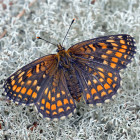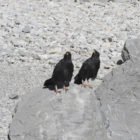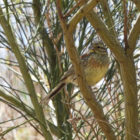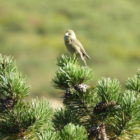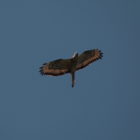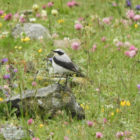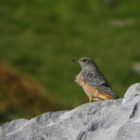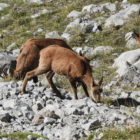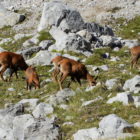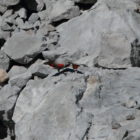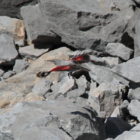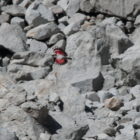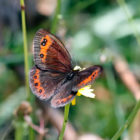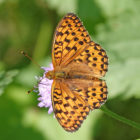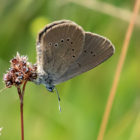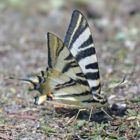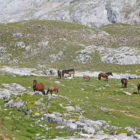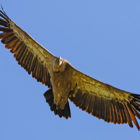Dates & Prices |
BOOK NOW |
Dates: 20th – 27th June 2021 (TBC)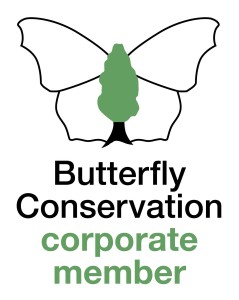
Price: £1,295 Places available
Single Room Supplement: £150
Deposit: £150 per person
Price Includes: All meals, accommodation, local ground transport, services of guides, holiday report
Not Included: International travel (flights, ferries, trains etc), travel insurance, drinks and any other personal items.
Conservation Donation: Butterfly Conservation
Leader: Pau Lucio
Group Size & Travel: Minimum of 3 and a maximum of 7 guests plus 1 leader.
Grade: Gentle paced and generally easy
Holiday Highlights
- Explore the heart of the Cantabrian Mountains with lofty peaks of limestone, a land rich in flora & fauna!
- A relaxed pace one centre tour, designed to enjoy maximum time in the field
- Enjoy 80+ butterfly species from the 150+ that reside in the Picos
- Star species we’ll look for include Apollo, Dusky Large Blue, Large Chequered Skipper, Scarce Copper, Purple-edged Copper, Gavarnie Blue, Chapman’s Ringlet & many more!
- Some fine birds possible, including Griffon Vulture, Bonelli’s Eagle, Short-toed Eagle & Booted Eagle, Alpine Accentor, Alpine Chough, Snow Finch & maybe even Wallcreeper or Lammergeier
- Alpine flora such as gentians & saxifrages, plus a nice selection of orchids & other flowers
- Possible to travel direct to Santander by ferry from Plymouth or Portsmouth
- Tour supports Butterfly Conservation
The Picos is at the core of The Cantabrian Mountain range, which stretches along the north coast of Spain for about 300 kilometres. It is one of the most beautiful and beguiling parts of the whole region. Over 150 butterfly species reside among the spectacular and rugged range of limestone mountains. Our daily excursions from the attractive and unspoilt village which is our base, will take in a variety of habitats and scenery, including flower rich meadows fizzing with a range of fritillaries and other goodies, woodlands and sunlit glades and then up into the mountains themselves for alpine treasures, hidden among rocky pastures and limestone pavement! We should see a good number of different butterfly species, just under 100 were recorded on a dedicated butterfly tour at a similar time in 2019. These included stars such as the Apollo and Gavarnie Blue, Bog Fritillary, Dusky large blue, Camberwell Beauty, Chapman’s Ringlet and Large Chequered Skipper. This promises to be a very popular tour – we recommend booking early to avoid disappointment!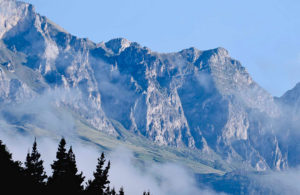
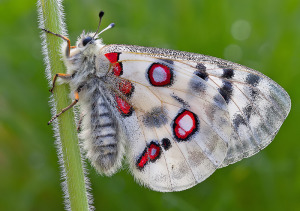
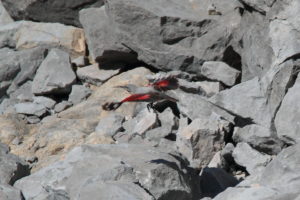
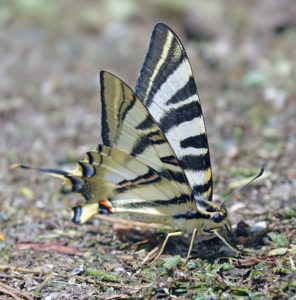
This itinerary is subject to change as we react to changing weather conditions – we will adjust plans to maximise our chances of seeing as much wildlife as we can, and in the best places.
Day 1: Meet at Santander airport, then transfer to our hotel in Boca de Huérgano.
If we make good time before dinner, we can take a stroll around the town and a nearby path. Birds such us white storks, rock sparrows and red-rumped swallows breed in the town. The path is surrounded by Cytisus oromediterraneus and Quercus pyrenaica and is also good for butterflies: Provençal and heath fritillary, chestnut and pearly heath among others. Beautiful plants such as Linaria triornithophora should be around.
Day 2: Mountain pass near Uña (1625 m.a.s.l.). (55 minutes, 45 km).
Alpine meadows and small pools. Odonata here on a previous visit were four spotted chaser, robust spreadwing, blue hawker, common bluetail damselfly, large red damselfly and common blue damselfly but depends on the weather and how advance is the season. In addition, we will look for some amphibians which include palmate newt, Iberian tree frog and Iberian frog. Plants around the area included blooming Gentiana lutea, Globularia repens, Arenaria montana, large-flowered butterwort, Rosa pendulina, early marsh orchid, lizard orchid and elder-flowered orchid.
Coffee and facilities in a bar el Puerto de Tarna (Casa Amelia). We will have lunch in a picnic area besides a chapel and following we can walk around to see some interesting butterflies.
Day 3: Wednesday 23 June. Valle de Valdeón.
First stop in an alpine mountain pass. Here we will look for a bird with a restricted range a Citril finch. Other species in the area include Booted Eagle, Tree Pipit and Yellowhammer. After this, we will visit a wet meadow which is interesting for plants – Digitalis parviflora, the endemic Erygnium bourgatii, Burnt-tip orchid, heath spotted, early purple and early marsh orchids – and butterflies: Chapman’s ringlet, Damon blue, Orange-tip, Black-veined white, various skippers, Scarce Swallowtail and insects such as owl-flies (ascalaphids).
Next stop in the viewpoint of Pandetrave (Mirador de Pandetrave) with excellent views. Not far from there, there is an old trap for wolves called “Charco de los lobos”, which we will visit.
Then, coffee, lunch and toilet stop in a bar in Valdeón. The village is surrounded by impressive high mountains and nice to walk around to see some garden birds like Redstart and Serins. After having lunch, we will walk around the meadows to add some more orchids: violet limodore, man orchid, pyramidal orchid, dark-red helleborine and fragrant orchids among others.
Day 4: Cremenes and La Encina.
Today we will visit a Mediterranean habitat near Cremenes. Some birds we might see include rock and Cirl bunting, Golden oriole, Iberian chiffchaff, Iberian green woodpecker, Red-backed shrike and Egyptian vulture. Lizard orchids, Woodcock orchids Pyramidal and tongue orchids should be blooming.
After coffee and facilities in in a local bar we will go to a picnic area to have lunch. Here, we will enjoy fritillaries: Knapweed, Meadow, Glanville, Spotted, and Dark green fritillary.
Our final stop of the day will be in an area with abandoned terraces. Here, we hope to see some interesting birds: bee-eaters, melodious warbler, Iberian grey shrike. Little and long-tailed blue butterflies, Berger’s clouded yellow and Oberthur’s grizzled skipper should be around.
Day 5 Fuente De (1h 20 min, 61 km).
One of the highlights of the week is a trip up in the Fuente Dé cable car, taking us to 1800m in the Central Massif. The Picos endemic saxifrage Saxifraga felineri occurs among a wealth of other alpines plants: trumpet and spring gentians, rock-jasmine, spring squill and the pretty stock Matthiola perennis.
Birds could include Water pipit, Northern wheatear, Alpine accentor, Snow finch, Alpine chough and, with luck, Wallcreeper and Lammergeier. Southern chamois (Picos subspecies) is up here and possibly snow vole.
Coffee and facilities in the bar/restaurant by the cable railway.
Day 6 Las Salas, Lois and Crémenes.
We will start the day looking for butterflies which might include Turquoise blue, Silver-studded blue, Brown argus, Ringlet and Wall brown, among others. We will keep an eye for Rock bunting, Dipper and mammals such as Southern Chamois. After this, we will visit the quaint village of Lois and the Cathedral “Catedral de la Montaña” a nice white church, quite big considering the small size of the village.
Here in the village can be also found “La casa del humo” (the smoke house). It seems that years go by the houses didn’t have chimneys and all the smoke went out towards the straw roof. People did it in order to isolate the house from the cold and to avoid insects, small mammals and birds to nest in the straw. The walls and the roof of the house are covered by thick layers of soot, there are even stalactites. There are no other houses like this in all Picos Mountains, so a visit is recommended.
Coffee and facilities in Lois. We can have our picnic in a picnic area near a chapel.
We will spend the rest of the day looking for butterflies in the nearby meadows: Amanda’s blue, Mallow skipper, the endemic Chapman’s ringlet among many others.
Day 7 Agroviejo and Crémenes. (30 min drive).
We will visit the orchards of Agroviejo looking for puddling butterflies such as Idas, Silver-studded Blue and different species of skippers. In addition, we will look for White admiral, Niobe fritillary, graylings and Apollo. On the cliffs, there will breeding Crag martins and Griffon vultures are often seen.
The afternoon will be spent again in Crémenes looking for butterflies and birds we haven’t seen previously.
Day 8 Departure and transfer to Santander airport.
Boca de Huérgamo to Santander airport.
We will stop on the way in Palencia province to add some birds such as Tawny Pipit, Whinchat, Cirl Bunting, Hoopoe and Booted Eagle. In addition, there will be good numbers of Iberian Marbled White, Great Banded Grayling and Black-veined White, among other butterflies.
Butterflies of Picos de Europa Holiday Report 2019
Butterflies of Picos De Europa holiday report 2018


